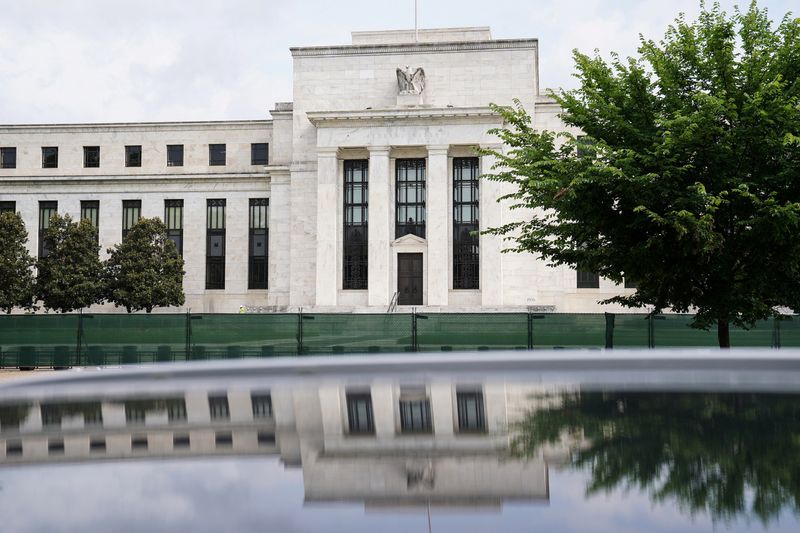Investing.com -- The Federal Reserve is widely expected to deliver a quarter-point interest rate hike when it concludes its two-day meeting on Wednesday, with some investors expecting central bank officials to signal a pause as it assesses its year-long tightening campaign.
Investors are focusing on whether the U.S. central bank indicates that it expects to pause rate increases after May, or if it keeps alive the possibility of an additional hike in June or later this year.
“Market pricing is now in line with our U.S. team’s view that the Fed will hike 25 basis points with no more hikes after that,” Morgan Stanley said in a note ahead of the meeting.
A 25 basis point hike would take the central bank’s benchmark rate to a 5% to 5.25% range. That range would not only mark the highest level of rates seen since 2007, but also meet the peak level of rates that was forecast in the Fed’s Summary of Economic Projections released in March.
Yet, bringing down the curtain on the fastest pace of rate hikes seen in four decades will be tricky for the Fed.
Inflation remains above the Fed’s 2% target, suggesting more work needs to be done to slow the economy. But the banking turmoil, which took a new twist after the failure of First Republic (NYSE:FRC), has the potential to aid the Fed in its fight to conquer inflation should a decline in lending activity, which would rein in economic growth, pick up pace.
“The Fed’s tightening is raising the cost of money … a higher cost of money, and a less accommodative banking system, these two things combined, can slow things down,” Sean O'Hara, president of Pacer ETFs said.
“The Fed could essentially pause after this last rate hike [in May] and let the tightness in the lending market do the rest of the work for them,” O’Hara added.
Tighter credit conditions are likely to slow growth in 2023 by about 0.4% Goldman Sachs says, equivalent to the usual impact of 40bps of rate hikes. Against this backdrop, the Fed is likely to emphasize the need for a higher-for-longer rate regime and stress that incoming data will reign supreme on future monetary policy decisions.
“The Fed is pausing when underlying inflation remains elevated, and for that reason it is likely to hold rates high for an extended period,” Morgan Stanley said, forecasting a pause until the “first 25bp cut in 1Q24.”
Fed Chairman Jerome Powell, who pushed back against rate-cut expectations at the press conference in March, could do so again, but this time with more vigor.
“[I]n the press conference we expect Chair Powell to sound data dependent, but we expect him to say that implies the next policy move is more likely a hike than a cut,” UBS said in a note.
